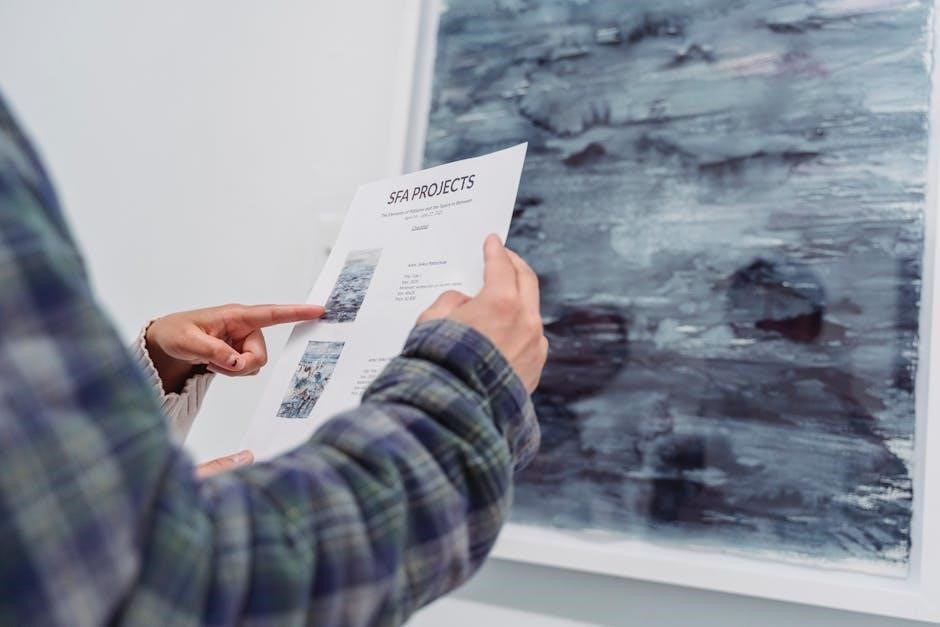Fishing Guide Gratuity: A Comprehensive Guide
Navigating the world of fishing charter tipping can be tricky. This guide provides insights into gratuity etiquette. Learn about appropriate tipping, crew communication, and addressing unsatisfactory service. Unlock the secrets of fishing gratuities now!
Understanding Fishing Charter Tipping Etiquette
Tipping your fishing guide is a way to show appreciation for their hard work. There is no single “right” amount. Understanding gratuity etiquette ensures that your appreciation is expressed appropriately. Respect the dedication of the crew by understanding tipping norms.
Many anglers are unsure how much to tip a fishing guide. There’s a certain etiquette, but nothing is set in stone; Knowing the general expectations can help you make an informed decision. It’s essential to consider the effort and expertise provided. Factors like experience and local customs contribute to tipping norms.
Tipping in the fishing charter world acknowledges the guide’s efforts. This includes preparation, navigation, and assistance. It demonstrates your satisfaction with the overall fishing experience. It is a gesture of gratitude for their dedication in making your trip memorable.
The Standard Tipping Percentage: 15-20% as a General Guideline
A general guideline for tipping your fishing guide is 15-20% of the total trip cost. This mirrors standard tipping practices in restaurants. Anything below 15% may suggest dissatisfaction with the service. A tip of 20% indicates that the guide met your expectations.
Consider this percentage as a starting point. Base your final decision on various factors related to your trip. These include the length of the trip, and the quality of service provided. Personal satisfaction with your fishing experience also plays a crucial role.
If the guide went above and beyond, consider tipping more than 20%. This acknowledges their exceptional efforts and dedication to your enjoyment. Remember that tipping is a gesture of appreciation. Adjust the amount based on your unique experience and the guide’s performance. Your tip should reflect the value you received.
Factors Influencing the Tip Amount
Several elements influence the appropriate tip amount for your fishing guide. These extend beyond a simple percentage calculation. Consider these factors to ensure your gratuity accurately reflects your experience and acknowledges the guide’s efforts. The length of your fishing trip plays a significant role.
A longer trip typically warrants a larger tip. This is because the guide dedicates more time and energy to ensuring your success and enjoyment. The quality of service is another crucial determinant. Was the guide knowledgeable, helpful, and attentive to your needs? Did they go the extra mile to find fish and enhance your experience?
Your personal satisfaction with the overall trip is paramount. Did you catch fish, learn new techniques, and have a memorable time? If the guide contributed significantly to a positive and fulfilling experience, a more generous tip is warranted. Evaluate these factors collectively to determine a fair and appropriate gratuity.
Length of the Trip
The duration of your fishing excursion significantly impacts the expected tip amount. A half-day trip will typically require a smaller gratuity compared to a full-day or multi-day adventure. Guides invest more time and effort in longer trips. This includes pre-trip preparation, on-the-water guidance, and post-trip cleanup.
Consider the extended commitment when calculating your tip. A full-day trip demands more energy and expertise from the guide. They are responsible for your safety, comfort, and fishing success for an entire day. Multi-day trips require even greater dedication.
The guide essentially becomes your host and instructor for an extended period. Acknowledge this increased commitment with a correspondingly higher tip. Remember, the longer the trip, the more the guide contributes to your overall experience. Factoring in the trip’s length is crucial for determining a fair and appropriate gratuity.
Quality of Service
The quality of service you receive from your fishing guide is a primary factor in determining the tip amount. Exceptional service warrants a higher gratuity, while subpar service may justify a reduced tip. Consider the guide’s knowledge, effort, and overall attitude.
A knowledgeable guide can provide valuable insights into fishing techniques, local waters, and fish behavior. An enthusiastic guide who goes the extra mile to ensure your success deserves recognition. Did the guide actively help you improve your skills? Were they attentive to your needs and safety?
Consider whether the guide was proactive in finding fish, even when conditions were challenging. A positive and engaging attitude can significantly enhance your experience. Did the guide create a fun and memorable trip? A guide who consistently exceeds expectations should be rewarded accordingly. Remember, your tip reflects your satisfaction with the service provided.
Personal Satisfaction
Beyond the objective measures of service quality, your personal satisfaction plays a crucial role in determining the appropriate tip. Did you have a genuinely enjoyable experience? Did the trip meet or exceed your expectations, regardless of the number of fish caught? Consider how you felt throughout the charter.
Even if the fishing was slow due to factors beyond the guide’s control, a positive and engaging attitude can salvage the day. A guide who makes an effort to ensure your comfort and enjoyment deserves recognition. Did you learn something new or improve your fishing skills? Did the guide create a memorable experience that you’ll cherish?
Ultimately, the tip is a reflection of your overall satisfaction with the trip. If you had a fantastic time and felt that the guide went above and beyond, a more generous tip is warranted. Trust your gut feeling and tip accordingly to express your appreciation. Let your personal experience guide your gratuity decision.
Exceptional Service: When to Tip More
While the standard 15-20% serves as a helpful guideline, outstanding service merits a more generous gratuity. Consider tipping above this range when your guide goes above and beyond to ensure an unforgettable fishing experience. Exceptional service extends beyond simply locating fish; it encompasses a range of factors that contribute to your overall satisfaction.
A guide who demonstrates exceptional knowledge of the local waters, proactively shares fishing tips and techniques, and displays genuine enthusiasm for their work deserves recognition. Did the guide go the extra mile to accommodate your needs and preferences? Were they attentive to your safety and comfort throughout the trip?
Exceptional service also includes providing assistance with gear, baiting hooks, and cleaning your catch. A guide who anticipates your needs and consistently exceeds expectations should be rewarded accordingly. Consider increasing your tip to 25% or more to express your appreciation for truly exceptional service. Remember, a generous tip acknowledges their dedication.
Subpar Service: Adjusting the Tip Accordingly
While tipping is customary, it’s essential to recognize that gratuity should reflect the quality of service received. If the service falls short of expectations, adjusting the tip accordingly is appropriate. This isn’t about being stingy; it’s about acknowledging that the guide didn’t fulfill their responsibilities.
Subpar service might include a lack of effort in locating fish, poor communication, or a general lack of attentiveness. If the guide is unprepared, unhelpful, or demonstrates a negative attitude, reducing the tip is justifiable. Consider factors such as safety violations, inadequate equipment, or failure to provide basic assistance.
It’s crucial to differentiate between circumstances beyond the guide’s control (e.g., unfavorable weather) and genuine shortcomings in service. If the guide made a reasonable effort despite challenging conditions, a reduced but still respectful tip might be suitable. However, if the guide was negligent or unprofessional, a smaller tip or no tip may be warranted. Open communication with the charter operator is also recommended to address concerns and provide constructive feedback.
Tipping on Multi-Day Trips: Daily vs. End-of-Trip Tipping
When embarking on a multi-day fishing excursion, the question of when to tip – daily or at the trip’s end – often arises. There isn’t a universally correct answer, as the best approach depends on personal preference and the specific circumstances.
Tipping daily allows you to acknowledge and reward good service promptly. This can be particularly beneficial if you have different guides or crew members each day. It also provides an opportunity to adjust your gratuity based on the day’s performance. Some anglers prefer this method as it ensures appreciation is expressed in a timely manner.
Alternatively, tipping at the end of the trip allows you to assess the overall experience and provide a comprehensive gratuity based on the entire duration. This approach is suitable if you have the same guide or crew throughout the trip and prefer to evaluate their performance holistically. Consider communicating your intentions to the guide beforehand to avoid any misunderstandings. Ultimately, the choice is yours, and either method is acceptable.
Tipping on Group Fishing Trips
Group fishing trips present a slightly different scenario when it comes to tipping. While the standard 15-20% guideline still applies, the manner in which the tip is calculated and distributed may vary.
One common approach is to pool the tip amount from all members of the group and present it as a single gratuity to the guide or crew. This method simplifies the process and ensures that the entire team is recognized for their collective effort. Alternatively, each individual can contribute their share based on their personal experience and satisfaction.
Communication is key in these situations. Before the trip, discuss the tipping plan with your group to ensure everyone is on the same page. It’s also helpful to clarify with the charter operator or guide whether the quoted price includes gratuity or if it’s an additional expense.
Remember to factor in the size of the group and the level of service provided when determining the appropriate tip amount. A larger group may warrant a slightly higher percentage to adequately compensate the crew for their increased workload.
The Role of the First Mate and Crew
On many fishing charters, particularly larger boats, there’s often a first mate or additional crew members assisting the captain or guide. These individuals play a crucial role in ensuring a smooth and successful fishing experience for everyone on board. Their responsibilities can include preparing bait, rigging lines, assisting with fishing techniques, cleaning the boat, and providing customer service.
It’s important to recognize the contributions of the first mate and crew when considering gratuity. While the captain or guide typically receives the majority of the tip, a portion should be allocated to the other crew members who worked hard to make the trip enjoyable. A common practice is to distribute the tip among the crew based on their level of involvement and responsibility.
If you’re unsure how to distribute the tip, you can ask the captain or guide for guidance. They can provide insight into the roles and responsibilities of each crew member and suggest an appropriate allocation. Remember, acknowledging the efforts of the entire team is a thoughtful gesture that is greatly appreciated in the fishing charter industry.
Cash vs. Other Forms of Gratuity
When it comes to expressing your appreciation for a fishing guide or crew, cash is king. The most preferred and straightforward method of tipping is with cash. Cash allows the recipient immediate access to the funds and avoids any potential fees or delays associated with other forms of payment. It also provides the most flexibility for the guide or crew to use the gratuity as they see fit.
While cash is generally the preferred option, other forms of gratuity may be acceptable in certain situations. Some anglers may choose to offer a gift certificate to a local restaurant or store as a token of appreciation. However, it’s essential to ensure that the gift certificate is something that the guide or crew would genuinely value and use.
In some cases, offering fishing gear or equipment as a gratuity may also be appropriate, especially if the guide or crew has expressed a need for specific items. However, it’s crucial to consider the guide’s preferences and ensure that the gear is of high quality and suitable for their needs. Ultimately, cash remains the most universally appreciated and practical form of gratuity for fishing guides and crew.
Tipping Regardless of Business Ownership
A common question among anglers is whether or not they should tip a fishing guide who owns the business. The answer is a resounding yes. Regardless of whether the guide is an employee or the owner of the charter, tipping is still customary and greatly appreciated.
While the owner may receive a larger portion of the overall revenue, they often invest a significant amount of time, effort, and resources into maintaining the boat, equipment, and business operations. Moreover, they are still providing a service, sharing their expertise, and working hard to ensure that anglers have a memorable and successful fishing experience.
Think of it this way: you’re not just tipping for the fish you catch; you’re tipping for the guide’s knowledge, skill, and dedication. A tip acknowledges their hard work, regardless of their ownership status. Therefore, it is standard practice to tip 15-20% of the trip cost, irrespective of whether the guide owns the business or is an employee.
Avoiding Confusion: Clarifying Expectations
To ensure a smooth and positive experience, proactively address tipping expectations before your fishing trip. Don’t hesitate to inquire about the standard tipping practice during the booking process. Contact the charter operator or guide directly to clarify any uncertainties. This open communication prevents misunderstandings and allows you to budget accordingly.
Specifically, ask about whether the quoted price includes gratuity or if it’s an additional expense. Also, confirm how tips are typically handled ⎯ whether cash is preferred or if other forms of payment are accepted. If you are part of a larger group, discuss tipping with your fellow anglers to establish a consistent approach.
By taking these simple steps, you demonstrate respect for the guide and crew while also setting clear expectations for yourself and your group. This upfront communication contributes to a more relaxed and enjoyable fishing experience for everyone involved. Don’t let uncertainty cloud your fishing adventure; clarify expectations beforehand.
Additional Considerations for International Trips
When embarking on international fishing trips, remember that tipping customs vary significantly across cultures. Before your trip, research the local tipping etiquette for fishing guides and crew in your destination. Online resources, travel forums, and guidebooks can provide valuable insights into regional norms.
Be aware that in some countries, tipping may not be as customary or expected as it is in the United States. In other cases, the standard tipping percentage may differ. Currency exchange rates are also a factor to consider. Familiarize yourself with the local currency and exchange rates to ensure you’re tipping appropriately.
Consider the cost of living in your destination. What may seem like a generous tip in one country could be considered inadequate in another. Cultural sensitivity is key. Observe how locals interact and adapt your tipping behavior accordingly. When in doubt, it’s always better to err on the side of generosity. Your thoughtfulness will be appreciated.


